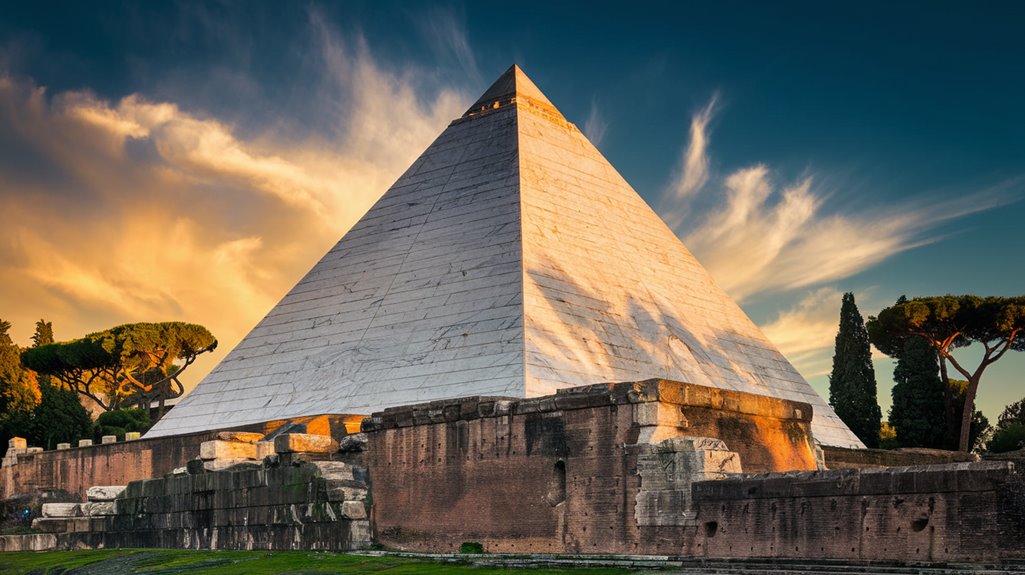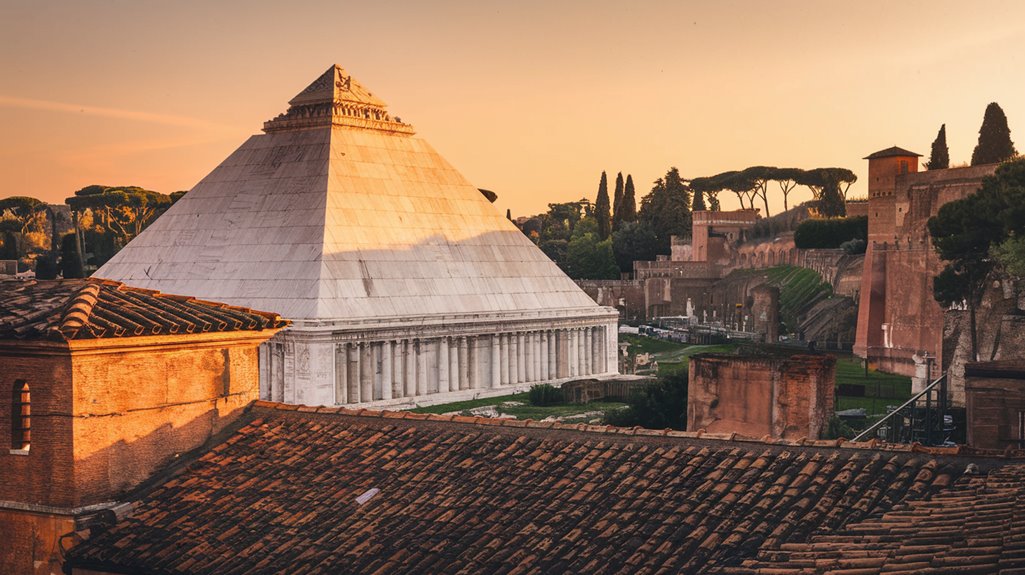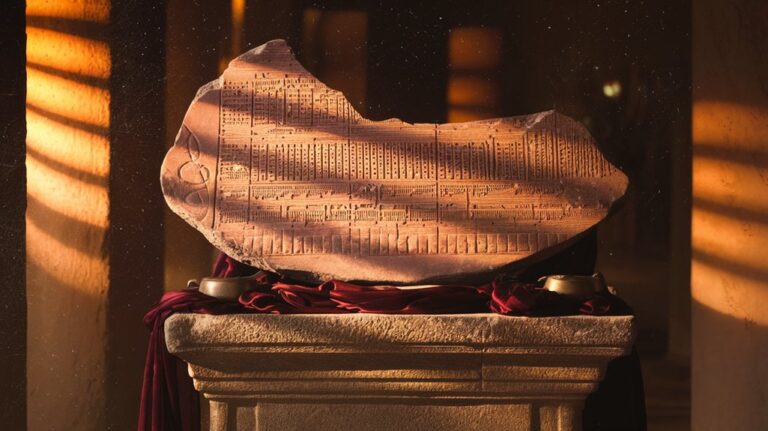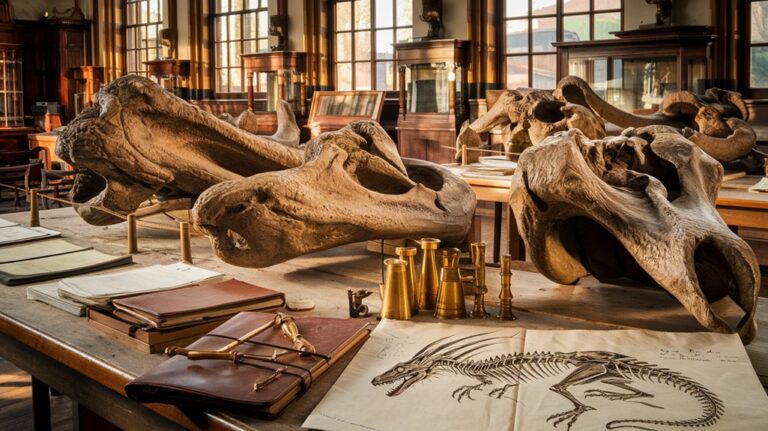There’s an Ancient Egyptian-Style Pyramid in Rome
Like a curious whisper from the past, Rome's unexpected pyramid stands as a monument to ancient cultural fusion. You'll find this marble-clad structure rising from the heart of the Eternal City, where it challenges everything you thought you knew about Roman architecture. While the Colosseum and Forum draw most tourists' attention, this 36-meter-tall Egyptian-inspired tomb holds secrets about Rome's fascination with exotic designs and the powerful aristocrat who commissioned it. What inspired a Roman noble to choose such an unusual final resting place?
The Egyptian Influence on Roman Architecture
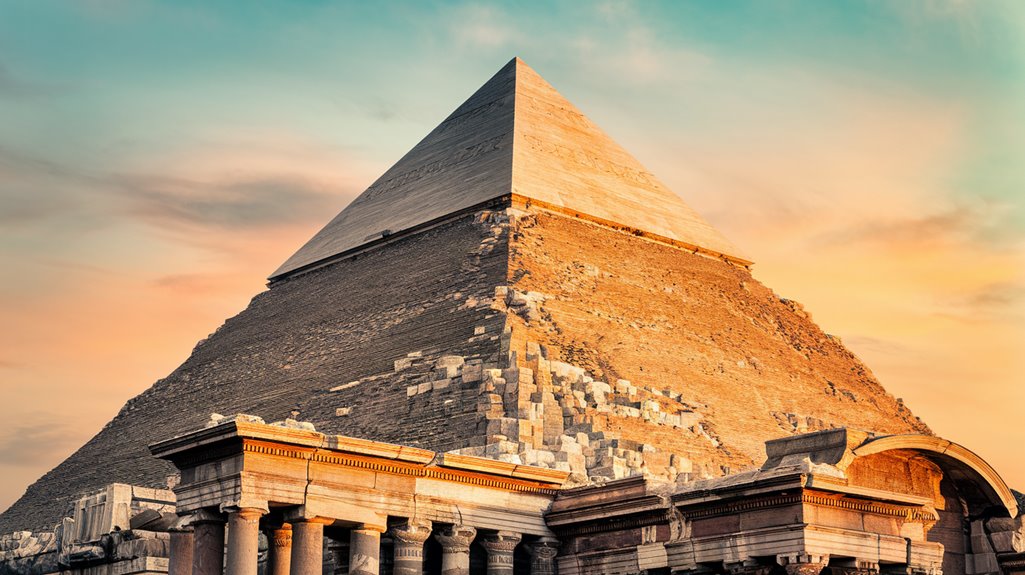
When Rome conquered Egypt in 30 BCE, it sparked an unprecedented wave of "Egyptomania" that transformed Roman architecture and culture.
You'll find evidence of this influence throughout Rome's ancient structures, where Egyptian motifs became increasingly popular during the Pax Romana period.
The most famous example is the Pyramid of Cestius, constructed between 18-12 BCE as a testament to Rome's fascination with Egyptian architecture.
The cultural exchange between these two civilizations went far beyond mere decoration. Ancient Egyptians had perfected the art of using limestone and sandstone in their grand monuments, which Romans eagerly adopted.
Roman architects incorporated Egyptian elements like pylon gateways, hypostyle halls, and hieroglyphic designs into their buildings.
You can see this fusion in temples dedicated to Egyptian deities like Isis and Serapis, where Roman and Egyptian architectural styles blend seamlessly.
Even more striking is how Romans repurposed Egyptian obelisks as symbols of power and integrated sphinx imagery into their public spaces, demonstrating how deeply Egyptian aesthetics had penetrated Roman architectural sensibilities.
Construction and Design Specifications
The Pyramid of Rome showcases remarkable engineering precision, combining Egyptian aesthetics with Roman construction techniques.
You'll find it built on a travertine foundation with a square base measuring 30 meters on each side, rising to an impressive height of 36.40 meters. The pyramid construction features a brick-faced concrete core covered with gleaming Italian marble blocks.
What's particularly fascinating about this architectural masterpiece is that it was completed in just 330 days, demonstrating the efficiency of Roman architectural techniques.
While inspired by Egyptian pyramids, you'll notice its slopes are steeper than those in Giza, possibly drawing influence from Sudanese tombs. This unique structure stands as the only pyramid remaining from ancient Rome.
The pyramid's strategic placement along Via Ostiense maximized its visibility, while its later incorporation into the Aurelian Walls helped guarantee its preservation through the centuries. The structure features inscriptions on two faces that further enhanced its commemorative purpose.
The Story of Gaius Cestius
Built between 18 and 12 BC during Augustus's reign, this remarkable pyramid stands as a monument to Gaius Cestius Epulo, a prominent Roman aristocrat who served as both praetor and tribune.
As a member of the prestigious Septemviri Epulonum, one of Rome's four major religious corporations, Cestius held significant cultural significance and Roman status in society. The monument was efficiently constructed in just 330 days under the supervision of his heirs.
While details about his personal life remain scarce, his choice of an Egyptian-style tomb speaks volumes about his wealth and the era's fascination with Egyptian culture.
Following Rome's conquest of Egypt in 30 BC, "Egyptomania" swept through Roman society, influencing architecture, art, and religion.
Cestius's pyramid, complete with a decorated burial chamber featuring celestial frescoes, reflects this cultural fusion and his desire to associate himself with Egypt's perceived wisdom and antiquity. The structure's steep angles were inspired by the Nubian pyramid style from the ancient city of Meroë.
Preservation Through the Ages
Thanks to its incorporation into Rome's Aurelian Walls between 271-275 AD, the Pyramid of Cestius stands as the city's only surviving ancient pyramid.
Its historical significance has been maintained through careful preservation efforts, including major restorations in 2001 and 2015.
You'll find this remarkable architectural legacy gleaming today, thanks to a 2 million euro renovation funded by Yuzo Yagi in 2016. The brick-faced concrete structure lies beneath its pristine marble exterior.
The impressive monument reaches 36.40 meters in height and serves as a testament to Roman engineering.
- Regular maintenance by free-climbers keeps the white marble exterior pristine
- The pyramid's steep slopes mirror Nubian designs rather than Giza's pyramids
- Its location near the Protestant Cemetery offers excellent viewing opportunities
Unlike its former twin, the Pyramid of Romulus, which was dismantled in the 16th century, this monument continues to captivate visitors as a unique fusion of Egyptian and Roman architectural styles.
Inside the Ancient Tomb
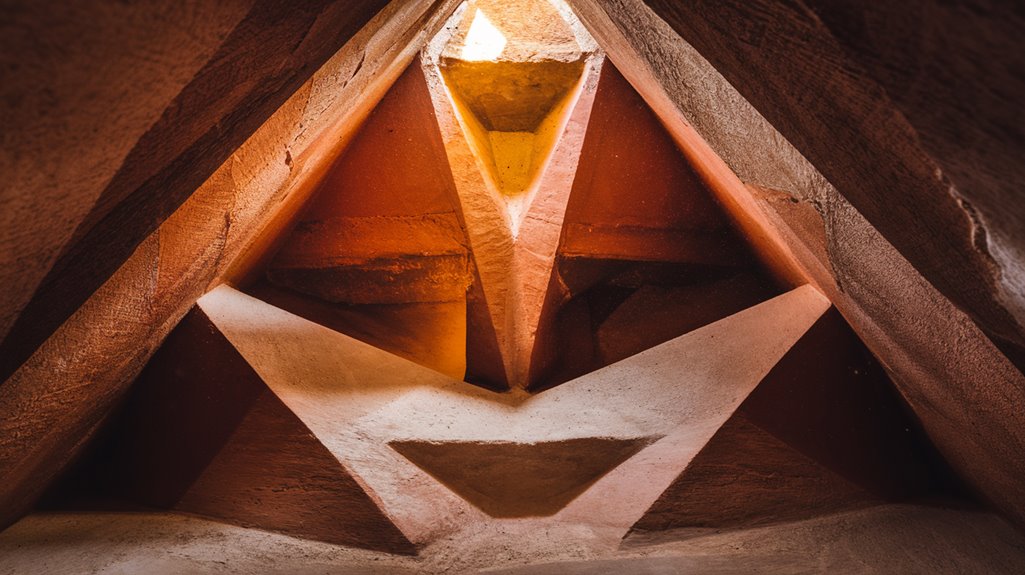
Stepping inside the Pyramid of Cestius reveals a remarkable burial chamber adorned with Roman frescoes and architectural elements.
You'll find yourself in a rectangular room with a barrel-vaulted ceiling, where interior frescoes showcase figures and vessels against pristine white backgrounds divided by delicate architectural motifs.
Looking up, you'll spot four identical nikai, winged victory figures holding laurel crowns, painted on the ceiling.
While the pyramid's exterior reflects Egyptian burial practices, the interior decorations are distinctly Roman, featuring the Third Style of fresco painting common in Roman tombs of that era.
The wall paintings depict female figures engaged in various activities, including a woman carrying food and musicians playing pipes.
The remarkable structure took a mere 330 days to complete, showcasing the efficiency of Roman engineering and construction methods.
 built in 330 days to fulfill the specific terms of Cestius's will. The structure features Lunense marble cladding on its exterior surface.
built in 330 days to fulfill the specific terms of Cestius's will. The structure features Lunense marble cladding on its exterior surface.
If you're planning a visitor experience, you'll need to make a reservation through the Museum of Via Ostiense.
The monument is accessible on specific days:
- Second and fourth Saturdays at 11:00 for individuals, 12:00 for groups
- First and third Saturdays at 10:30, combined with museum tours
- Educational visits with guided tours lasting about an hour
You'll find it's easily reachable from Roma Ostiense station, and you can explore nearby attractions like the Protestant Cemetery while you're in the area.

